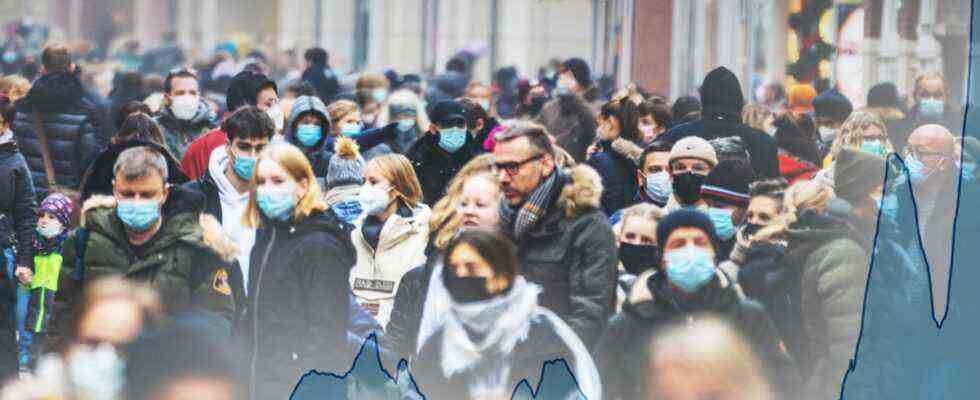The German patient 1 must have suspected something, otherwise he would hardly have gone to the Munich Tropical Institute on the morning of January 27, 2020. At the time, the 33-year-old from the district of Landsberg am Lech worked for the Upper Bavarian automotive supplier Webasto. A few days earlier, he had attended a meeting with a colleague from Shanghai, and they were drinking coffee. After her return flight, the colleague in China tested positive for the corona virus. On the morning of January 27, the man can also be tested. In the evening it is clear: the test is positive. The corona virus has arrived in Germany.
Since then it has eaten its way through the republic: more than 100,000 people have died and public life has been paralyzed for months. The charts below show the toll Covid-19 has taken on Germany over the past two years. According to the Robert Koch Institute (RKI), around nine million people have been infected so far. The incidence curve has become a symbol of the pandemic. It rose and fell again four times, followed by the number and severity of the corona measures. It is currently piling up for the fifth time; as high as ever.
In the weeks after the first outbreak at Webasto, the virus was still spreading slowly, but then from March 2020 at the latest, it started to spread faster and faster. Some regions have since been hit harder by the pandemic than others. The northern federal states reported comparatively few corona cases, the southern and eastern federal states significantly more.
In the district of Landsberg am Lech, where German patient 1 lives, there is now about one corona infection for every ten inhabitants. In some areas in Saxony and Thuringia, every fifth person has had an infection.
The proportion of corona deaths is also highest in the new federal states. In the Hildburghausen district in Thuringia, around 370 people infected with Covid-19 have died in the past two years – this corresponds to 0.59 percent of the population.
However, the toll of the pandemic is not only measured in the number of infections and deaths. Social life has also suffered. Since the first lockdown in March 2020, many people have reduced their contacts. A team of German researchers used anonymized GPS data to estimate how many people the average German had met each day over the past two years.
In total, more than 117,000 people with a Covid 19 infection have died in Germany. Every day there are about 150 more. But the curve of new deaths is currently falling, although the incidence is rising at the same time. On the one hand, this is due to the fact that more and more people are getting vaccinated and therefore only have a mild course of the disease. According to current knowledge, the omicron variant, which has been dominant for a few weeks, also leads to less severe courses than the delta variant. On the other hand, deaths naturally do not occur immediately after an infection – the curve of deaths lags behind the curve of infection.
When it comes to corona deaths, doctors distinguish between people who die of Covid-19 as the underlying disease and those for whom Covid-19 is only a concomitant disease. In 2020, for example, the RKI reported 39,760 deaths from Covid 19 infections and 8,100 deaths from Covid 19 infections. So not all corona deaths also die from corona.
However, a look at the number of deaths shows that many more people died in Germany in 2020 and 2021 than in previous years. This is also related to the aging of society. But according to many scientists and statisticians, the pandemic is the main reason for excess mortality. The toll she took on Germany: it can also be seen in these two red lines, some of which are much higher than they should be.
Two years after the outbreak of the pandemic, Germany is in the middle of the fifth wave. So many people are currently becoming infected that the laboratories are reaching the limits of their testing capacities. Millions more people will most likely become infected and thousands more will die in the coming months. The coronavirus still has society firmly in its grip.
But an end to the pandemic may be in sight. Many experts believe that Germany will enter the endemic phase in the course of 2022. The infections and vaccinations increase the immunity to the virus in the population. Outbreaks could eventually be locally limited, and the course of the disease is expected to become milder. The virologist Christian Drosten said a few days ago that there may be another increase in incidence next winter in an interview with the daily mirror. Then you would have to wear a mask indoors again. But will we ever go back to living the way we did before the pandemic? “Yes, absolutely,” said Drosten, “I’m completely sure of that.”

